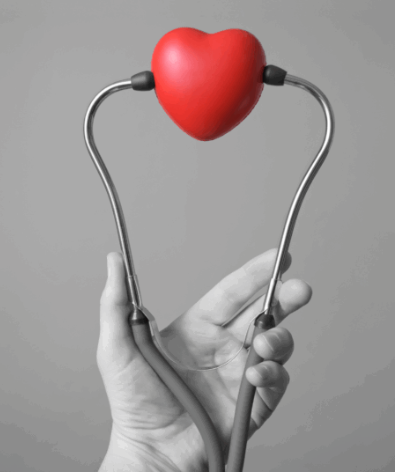
How to Create a Bad Day Survival Kit for Finding Calm
Everyone faces tough days, and sometimes, no matter how hard we try, it feels like nothing goes right. Whether it’s anxiety, stress, or personal conflicts, those days can feel overwhelming. How we respond to those moments can often make the difference between feeling better or letting things spiral.
I recently had one of those days where anxiety got the best of me. With the holiday season approaching, I knew I’d have to interact with someone I felt tense around, and my worries started to overshadow all the exciting things I was looking forward to. It’s so easy to let those negative thoughts take over, right?
The holidays (and big events) often bring up emotions or interactions we’d rather avoid. After talking things through with my therapist, she suggested I create an “emergency plan,” much like the ones we prepare for real-world crises. Why not have a plan in place for those emotional “emergencies” when everything feels too much? That’s when the idea for a Bad Day Survival Kit came to me.
What Is a Bad Day Survival Kit?
A Bad Day Survival Kit is exactly what it sounds like: a collection of items to help soothe and calm you when you’re feeling overwhelmed or anxious. This kit can be placed in a box, which you keep in your home or car, and can be opened whenever you need a little TLC. The goal is to help you feel more grounded and return to a peaceful state of mind. What goes into the box? Well, there are no rules! It’s all about finding what will support you when you need it most.
Here are some ideas for what to include in your kit:
1. A Note to Yourself
When anxiety or sadness hits, negative self-talk can take over and make everything feel much worse. One way to combat this is by having a comforting message from your future self. If you could talk to the person who would open the kit, what would you want them to know?
- Remind yourself that you’ve been through difficult times before, and you’ve always found your way out.
- Validate your emotions, but also remember that they don’t define your truth.
- Encourage yourself not to fight your feelings but accept them as part of being human.
- Let your future self know how much you love and care for them, as this is often the hardest thing to remember in moments of distress.
Write your note in a way that feels nurturing and easy to read when you’re in a tough spot. Whether it’s a heartfelt letter or a list of affirmations, the important thing is to be kind and reassuring to yourself.
2. Items That Provide Physical Comfort
When things feel out of control emotionally, physical comfort can offer a grounding effect. Sometimes, addressing your physical senses first can help you regain a sense of calm before addressing any mental or emotional concerns.
Consider these items for comfort:
- Smell: Essential oils like lavender or rose, a soothing candle, or a bath bomb.
- Touch: Cozy clothing, a stress-relief ball, or a calming item like a desktop zen garden.
- Taste: Herbal teas like chamomile or peppermint, your favorite snacks, or comfort food like crackers.
- Sound: Headphones with a reminder to listen to a calming playlist, such as binaural beats or nature sounds.
- Sight: A photo of your favorite relaxing place, a piece of art that brings peace, or instructions to search for “relaxing visuals” online.
Having these physical comforts available makes it easier to step away from negative thought patterns and focus on tangible, soothing elements.
3. Items for Mental, Emotional, and Spiritual Comfort
There are also items that can provide emotional or spiritual support. These can help you feel nurtured and inspired until the negative emotions pass:
- Cards with your favorite affirmations or comforting prayers.
- Photos of loved ones or happy memories that remind you of good times.
- Uplifting quotes from your favorite authors or role models.
- A journal to write down your anxious thoughts and process your feelings.
- A meditation pillow or a note to listen to your favorite guided meditation or simply practice deep breathing.
If you’re tech-savvy, consider adding a reminder to check out a mental health app that offers support or exercises to calm anxiety. These can be invaluable tools, even if you can’t put them directly in your kit.
4. Items That Encourage Connection
On tough days, we often crave solitude, and that’s completely okay. Spending time alone can be restorative. However, sometimes we may shy away from reaching out for support when we truly need it. That’s where your kit can come in handy.
Include something that gently nudges you to connect with others when the time is right. Here are a few ideas:
- A picture of a trusted friend or family member to remind you of your support system.
- A note to yourself suggesting you reach out to a friend, or even just to ask for a hug.
- A reminder to spend time in nature or get outside, where you can feel a sense of connection to the world around you.
Your kit can be a gentle prompt to remember that, even when you’re struggling, you don’t have to face it alone.
How to Put Together Your Own Bad Day Survival Kit
Choosing the container for your kit is totally up to you. Whether it’s a beautifully crafted box, a simple shoebox, or even an old trunk, the important thing is that it’s easily accessible. When you find yourself having a bad day, you’ll be able to open it up and let it work its magic.
Building your Bad Day Survival Kit is a simple way to be proactive about managing your emotions and staying calm during stressful moments. By creating a box filled with physical comforts, supportive messages, and reminders of connection, you’ll always have a personalized way to regain your peace when you need it most.
Start gathering your items today and give yourself the gift of calm for those challenging days ahead.






